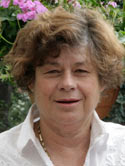Cormorant Fishing in Guilin



Helen and Steve took a group of friends to China and Tibet for 24 days in September 2007. If you would like to be advised of future adventures, you can email them on: steve@amazing.com.au with the subject ADVENTURE.





Posted by
Helen Proud
at
12:55 am
0
comments
![]()
Labels: Cormorant Fishing, Guilin

 Saturday 22nd September
Saturday 22nd September
Posted by
Helen Proud
at
12:14 am
0
comments
![]()


Posted by
Helen Proud
at
9:09 pm
0
comments
![]()

 Thursday 20th September
Thursday 20th September
Posted by
Helen Proud
at
8:36 pm
0
comments
![]()
Posted by
Helen Proud
at
9:27 pm
0
comments
![]()
Labels: Ethnic Minority, NaXi, Yunnan Province

Posted by
Helen Proud
at
8:34 pm
0
comments
![]()
Posted by
Helen Proud
at
11:06 pm
2
comments
![]()
Labels: Flying Tigers, Yunnan Province
Posted by
Helen Proud
at
10:42 pm
0
comments
![]()
Labels: china, Kunming, Stone Forest, Tea Ceremony, Yunnan Province

Please panda, do come down from the tree. It is time for your lunch and a nice sleep.
Posted by
Helen Proud
at
10:37 am
1 comments
![]()
Labels: Panda
Posted by
Helen Proud
at
10:30 am
0
comments
![]()
Posted by
Helen Proud
at
9:08 pm
0
comments
![]()
 Friday 14th September
Friday 14th September
Posted by
Helen Proud
at
8:46 pm
0
comments
![]()
Labels: Chengdu, Mao, Science and Technology Museum, traffic


Posted by
Helen Proud
at
8:28 pm
0
comments
![]()


 Wednesday 12th September
Wednesday 12th September
Posted by
Helen Proud
at
12:42 am
0
comments
![]()
Labels: Yamdrok Tso Lake



 Tuesday 11th September.
Tuesday 11th September.
Posted by
Helen Proud
at
11:28 pm
0
comments
![]()
A Tibetan, a Chinese and a Japanese were all travelling together on a small aircraft from Lhasa to Shigatse.
The Japanese took out his camera and threw it out of the window of the plane. Startled, the Chinese asked him why he had done this.
"We have plenty of those where I come from, I don't need it" replied the Japanese.
The Chinese took out his radio and threw it out of the window. “Why did you do that?" asked the Tibetan.
"We have plenty of those where I come from" replied the Chinese. "I don't need it" he added.
The Tibetan thought for a moment. He had nothing to throw out of the window. Without warning he grabbed the Chinese by the throat and threw him out of the window.
Alarmed, the Japanese asked him why he had done such a thing. "We have plenty of them where I come from, I don't need it!" was the reply.
Posted by
Helen Proud
at
12:27 am
0
comments
![]()
Posted by
Helen Proud
at
12:14 am
0
comments
![]()

 Monday 10th September
Monday 10th September
Posted by
Helen Proud
at
11:35 pm
0
comments
![]()
Labels: Ganden monastery, monks, Tibet
Zong Khapa founded the Yellow Hat Sect in the 14th Century AD. One of his disciples was named Jamyang Choje. Jamyang Choje built the Drepung Monastery, high on a mountainside overlooking Lhasa in 1416 AD.
Posted by
Helen Proud
at
12:32 am
0
comments
![]()
Labels: Drepung Monestary, Jamhyang Choje, Zong Khapa
In the second century BC, Nya Tri Tsanpo from India decided he would like to travel to Tibet, (as you do). He set off and when he reached the southern mountains of Tibet, he met some herdsmen. They asked him where he came from, but neither understood the other's language. So they communicated with sign language, (as you do).
Nya Tri Tsanpo gestured in the direction of India, but the herdsmen misunderstood the communication and thought that he was pointing to the sky. As everyone there knows, anyone who comes from the sky is very wise, so they asked Tsanpo to be their leader. Tibet at the time had no leader and the population just wandered around and lived in caves. There were no buildings.
Tsanpo agreed to become their king and set about having the first Tibetan building constructed. It was his palace and stood on the site now occupied by the Potala Palace, which was built on the remains of the original Tsanpo palace, 900 years later.
King Tsanpo followed the Bon religion, which was the original Tibetan pagan religion, involving among other things, the worship of animals.
Posted by
Helen Proud
at
12:18 am
0
comments
![]()
Labels: bon religion, king, Tibet Train

Posted by
Helen Proud
at
11:58 pm
0
comments
![]()
Labels: Jokhang Temple, Songtsan Gampo


 Sunday 9th September.
Sunday 9th September.
Posted by
Helen Proud
at
7:28 pm
0
comments
![]()